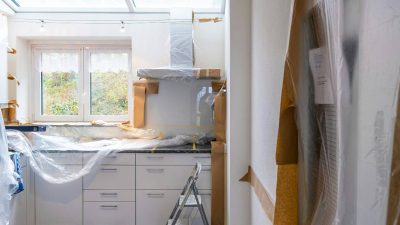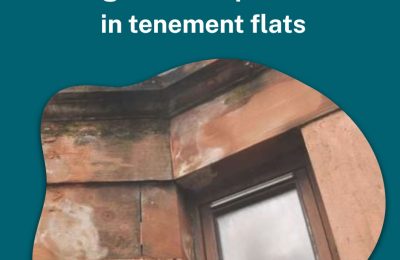Scotland presents unique challenges for outdoor living, but the demand for private outdoor space among tenants has never been higher, especially in a post-pandemic market.
Balconies, patios, and gardens consistently rank among the most desirable property features, and for landlords, this offers up a compelling opportunity. Transform these spaces from fair-weather luxuries into functional year-round assets and you can command premium rents for a property with significantly enhanced appeal.
The key lies in focusing on three fundamental pillars, shelter, light and warmth, and durability, to create outdoor areas that remain inviting and usable regardless of Scotland’s unpredictable weather.
Shelter from the showers
To truly make a rental garden usable year-round, shelter from unexpected downpours is non-negotiable. A simple parasol won’t suffice though. Fixed or semi-permanent coverings provide more stability and give tenants the confidence to use outdoor spaces all throughout the year, knowing they won’t be forced to wrestle with collapsing lightweight umbrellas or temporary covers in high winds.
The gold standard for ground-level properties is a pergola that allows for complete protection against wind, rain, and sunshine. Better yet, opt for a louvred pergola, such as those offered by Suns Lifestyle, which provides full customisation as to how much light and shade you’re exposed to.
These structures make a garden or patio usable year-round, and add a beautiful architectural element and perceived value to the property. For landlords with properties featuring smaller balconies or terraced areas, wall-mounted awnings or tension sails are the perfect solution and don’t require extensive groundwork.
Extending the day with light and warmth
Shorter winter days and extended summer evenings require thoughtful lighting solutions that serve dual purposes: security and ambience. Motion-sensor lights strategically installed at entry points around the property provide peace of mind for tenants and deter unwanted visitors, while low-voltage string lights or lanterns offer warm, welcoming illumination without overwhelming electricity costs. Solar-powered options are particularly attractive for landlords because they eliminate the need for complex wiring and provide a sustainable, cost-free solution.
In colder months, having outdoor heat helps enormously. Wall-mounted infrared heaters are a renter-friendly option as they’re efficient, easy to install, and provide focused warmth without the safety concerns that come with gas heaters.
Low-maintenance and durable designs
The Scottish climate can take its toll on outdoor materials, so durable and low maintenance products are essential for rental properties. Traditional grass lawns, while aesthetically pleasing, demand regular mowing and quickly become muddy, patchy disasters during wetter seasons. Hardscaping, on the other hand, like quality paving or even premium synthetic turf, is far more practical and will maintain its appearance and functionality regardless of the weather.
Composite decking deserves particular attention from landlords. Unlike traditional timber, which requires annual oiling or staining, is prone to rot in damp conditions, and becomes dangerously slippery when exposed to moisture, composite materials are specifically engineered to withstand harsh weather.
It resists moisture, requires no ongoing treatment, and maintains superior grip even in the rain; a crucial safety consideration for rental properties. The initial investment in composite materials is quickly offset by eliminated maintenance costs and its extended lifespan, typically lasting decades without the warping, splintering, or deterioration common to timber in wet conditions.
Finally, aesthetics matter when you’re presenting a rental and trying to minimise vacancy periods, so built-in features like raised planters or defined beds help control the outdoor space and keep maintenance manageable for tenants. These additions provide clear boundaries for any gardening responsibilities and prevent disputes about what constitutes reasonable upkeep. It also gives tenants the opportunity to personalise their outdoor space if they want to, without it becoming a necessity for those who don’t.
Outlining landlord and tenant responsibilities
Updating outdoor spaces may make your property more desirable to tenants, but it also increases responsibility for all involved. Make sure that once the upgrades are completed, your tenancy agreement is also updated to reflect any new responsibilities both for landlords and tenants alike. This should include tasks like making sure any fixed heating elements are inspected annually, gutters are cleared on canopies or pergolas, and electrics are safe and functional.
Health and safety are naturally a concern too. Outdoor furniture should be secured against strong winds, and all electrical installations need to be installed by a qualified electrician and serviced regularly, with clear documentation of when it was checked.
Tenants need to be assigned reasonable tasks to keep the area tidy, including sweeping paved areas, removing any accumulated debris, and making sure heaters and lights are switched off when not in use to prevent premature wear and tear.
A functional, year-round space, whether it’s a decorated balcony, a patio area, or a full lawned garden, dramatically improves tenant satisfaction, reduces void periods, and justifies premium rental rates in a competitive lettings market. Invest in robust weather protection, appropriate lighting and heating, and durable, low-maintenance materials to transform outdoor spaces from seasonal luxuries to essential assets.










